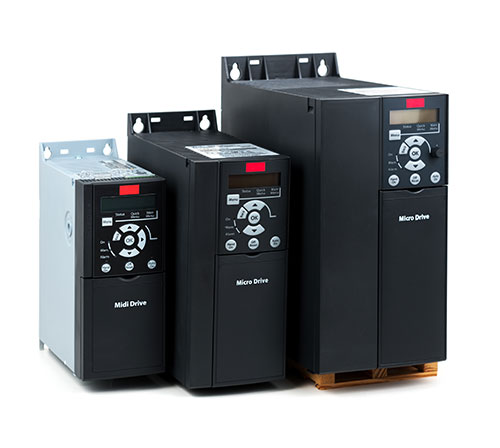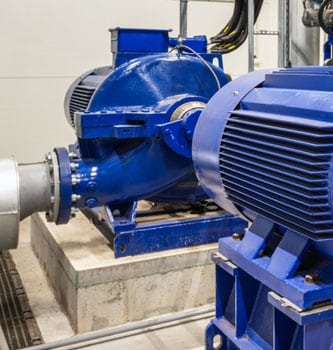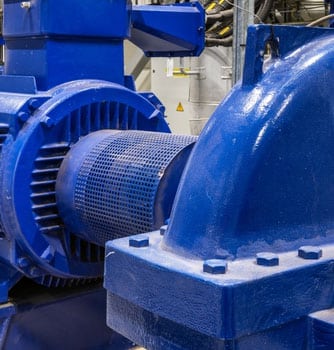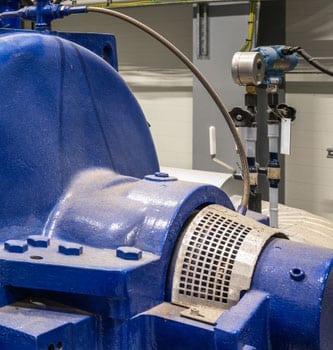What is a Variable Frequency Drive (VFD)?
A variable frequency drive (VFD) is a device that controls the speed an electric motor by altering the frequency and voltage of its power supply. The VFD can be set up to match the various requirements of the control environment, such as the ramp-up and ramp-down times of the motor during start or stop, this helps to reduce the stress on the pump motor, and allows for a smooth increase or decrease in speed.
There are many reasons why you may want to control the speed of a motor:
- Improve system efficiency of the motor and pump.
- Save energy, by reducing the demand on the supply, when it is not needed.
- Matching the drive speed to the process needs.
- Improve the work environment (e.g., reduce noise levels).
- Increase the life expectancy of the motor and pump, by reducing mechanical stresses.

VFD's Explained
What’s the difference between a Variable Frequency Drive (VFD), an AC drive, and a Variable Speed Drive (VSD)?
There are essentially no differences, as all these names refer to similar types of motor speed controller.
There are two major types of motor speed control available:
1. Mechanical
While mechanical speed control can be very effective and reliable, it tends to lack efficiency, usually around 70%. This results in an increase in energy consumption.
2. Electrical
When VFD drives are used correctly, efficiencies of 80-95% can be achieved, which results in better energy savings.
Mechanical VSDs include:
- Variable Pitch Drive. Speed control is achieved using belts or chains, and a system of pulleys.
- Traction Drive. Gearless, roller drive system which is well suited to precision work.
- Hydraulic Hydrostatic Drive. Functions by trapping hydraulic fluid and forcing it through a controlled channel.
- Hydraulic Hydrodynamic Drive or Fluid Coupling. Transfers power from one system to another via a fluid. There is no mechanical connection between the systems.
- Hydraulic Hydro Viscous Drive. Utilizes the viscosity of a fluid to transfer power from one system to another.
Electric VFDs include:
- Eddy Current Coupling. Utilizes a rotating magnetic field to provide high power transmission, without the associated mechanical stresses.
- DC Drives and corresponding DC Motor. Speed control is achieved by varying the DC voltage to the motor.
- AC VFDs and associated AC Motors - Direct Conversion / Current Source / Voltage Source/ Frequency Conversion.
What are the advantages of using a Variable Frequency Drive (VFD)?
- Save energy and reduce consumption when compared to a Direct-On-Line (DOL) operation. A variable frequency drive changes the supplied power to match the energy requirements of the equipment. By using a VFD, you can achieve power or fuel savings of 40% on average.
- Reduce Nitrogen Oxide (NOx) emissions.
- Lower the Carbon Dioxide (CO2) footprint of the system.
Choosing the right Variable Frequency Drive (VFD)
When choosing a Variable Frequency Drive (VFD) one of the most important things to consider is the type of load being applied to the motor, as this will determine the size and cost of the VFD. It is imperative for the VFD to have the required capability for the motor to produce the desired torque for the load.



